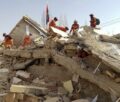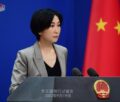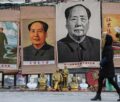What makes terrorists a big force in Pakistan: A Poreg analysis

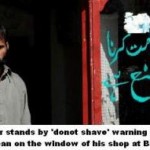
(Poreg.org) Punjab province, the largest of the four provinces of Pakistan, and traditionally the dominant player on the country’s political scene, is in the news these days, for all the wrong reasons. It is ruled by the Pakistan Muslim League faction led by former Prime Minister Nawaz Sharif. His brother, Shahbaz Sharif, is the chief minister. About a month ago, leading daily, Dawn reported that a provincial minister was hobnobbing with the leadership of a banned Sunni militant organisation. The report has since become a full- blown controversy, drawing into its vortex several high ranking ministers, who have blandly justified their association with the banned groups as vote bank politics. And that has put the spot light on the financial muscle, political stature and jihadi stakes of the group
Pakistan was carved out of British India six decades ago as the land of the pure. Today it stands polarized on religious, ethnic and sectarian lines; it is also witnessing a rampant drug and gun culture which has been nurturing and sustaining jihadi groups. Historically two factors have contributed to Pakistan’s drift towards religious fanaticism and Islamist adventurism. One the perceived need of the ruling elite to checkmate the neighbour India and to make it bleed profusely with thousands of cuts. Second the geo-political interests and cold war concerns of the United States of America in Afghanistan in the seventies when the Soviet tanks rolled into Kabul.
21 September 2001 forced a change to the paradigm. Till the al Qaeda attacks on symbols of American pride happened, the strikes by predominantly Punjab based Pakistan terrorist groups against India from Kashmir to Kolkata rarely figured on the front pages of American papers. Post the 21/9 attacks President Pervez Musharraf was forced to hurriedly toe the American line and commit Pakistan to the war on terror. His successor Asif Ali Zardari is continuing with the same policy.
The reports from Punjab province open up the debate: Is Pakistan government carrying out action against militant groups or is it merely creating the perception of taking action against militant groups. These twin questions also assume significance following the freedom of hate speech Hafiz Sayeed, the founder of Lashkar-e-Taiba and Jamaat-ud-Dawa (JUD) is enjoying to spew venom at America, Israel and India, though not necessarily in that order.
‘It might not be news that jihadists belonging to outlawed groups are operating in Pakistan, but the degree to which it’s happening in South Punjab might come as a surprise’, the Central Asia Online says. ‘The area of South Punjab is known for violent and extremist organisations, such as Sipah-e-Sahaba Pakistan, Harkatul-Ansar, Harkatul Jihad-al Islami, Jaish-e-Muhammad (JeM), Lashkar-e-Jhangvi (LeJ), and so on”, the Internet portal, which offers services in Persian, Urdu and Russian, said quoting intelligence sources.
There is a ring of truth in the report. South Punjab is home to top militant leaders like Maulana Masood Azhar (wanted by India), and Qari Saifullah Akhtar (who joined Mullah Omar in Afghanistan in the 1990s). It, in fact, meets the HR needs of all militant of all hues, the Taliban including. Militants are active in other regions of Pakistan as well. Karachi is a major funding source. It is the first sanctuary of foreign militants coming to Pakistan. Waziristan provides training facilities and the freedom to operate and collaborate.
PATRONAGE – THEN AND NOW
Extremism and terrorism in Pakistan have long been synonymous with the army dominated and driven state apparatus. The early years of the relationship were defined by the state utilizing the extremist groups to further the foreign policy, mostly against Indian interests in Kashmir. Since the seventies, these groups became weapons of the state policy on Afghanistan. In the recent years, the Islamist militants have become tool in garnering support from a rising conservative electorate. State patronage and protection and the thin dividing line between sleuths and the militants have entrenched the network of extremist and terrorist organisations.
There is a flipside to the development. Some groups have moved away from the control of the handlers in the army managed official sleuth, the ISI (Inter Services Intelligence). One such group is Tehreek-e-Taliban Pakistan (TTP). It is determined to wage war against the Pakistani state in reaction to the government’s involvement in America’s war on terror. The class composition and ideological moorings of the TTP could be the reason for the low intensity- high profile military operation against them in the tribal areas bordering Afghanistan.
Significantly, Punjab Chief Minister Shahbaz Sharif has openly appealed to the TTP and its ilk to ‘spare his province’ as ‘I am not following the dictates of the US’. The appeal came as militants repeatedly attacked soft targets in his state. Simultaneously, his minister for law, Rana Sanaullah, was seen hobnobbing with members of the Sipah-e-Sahaba (SSP), a Sunni extremist group that was banned in 2002 under American pressure. Started as a response to the Iranian revolution, in the eighties, as Anjuman-e-Sipah-e-Sahaba and the Army of the Friends of the Prophet, it is presently operating as Ahle Sunnat Wal Jamaat.
Cornered by political rivals and the media, Sanaullah has come up with an interesting explanation. ‘What is wrong in my action? SSP represents thousands of votes. How can PML-N ignore them? Is it fighting the Americans? Why are you raising objections?’ He offered the same justification for not taking action against the Lashkar-e-Taiba and Jaish-e-Mohammad (JeM). ‘They (LeT and JeM) are not fighting along side the Taliban; they are only resisting India in Kashmir. Our aim (of Punjab government) is to moderate such groups and make them more progressive’.
In what is evidence that the ban on the organisation means little to authorities, Punjab police have stepped up security cover to Hafiz Sayeed. ‘We perceive an increased threat to his life’, a government spokesman said in Lahore by way of justification. Official documents show the Punjab government provided JuD with approximately Pakistani Rupees.82.77 million in the last financial year for its charity work. Another three million rupees were gifted to its madrasas which are recruitment centres for jihad, a report in ‘Dawn’ said quoting official documents.
In other words, the provincial government in Lahore, like federal government of Prime Minister Gilani in Islamabad, and the army of General Pervez Kayani in Rawalpinidi, has branded terrorists as bad and good based on their utility to further state policy. Action against the bad terrorists is not forthcoming though.
SSP, LeT and JeM and Lashkar-e-Jhangvi (LeJ) fall under purview of what Punjab province considers the ‘good’ terrorists. All of them toe the hard-line Deobandi school of Islam. Political parties on both sides of the spectrum have become closely aligned to these groups without exception. SSP leader Maulana Ahmad Ludhiyanvi, who according to a Reuters despatch, shared the dais with the PML (N) at a massive rally in the Jhang, Central Punjab, in 2008. The Maulana has gone on record that the Peoples’ Party of Pakistan (PPP) had won 25 National Assembly seats with their help.
A Hafiz Saeed rally in Lahore on June 13, 2010 against India and Israel was addressed by Jamaat-e-Islami leader Syed Munawar Hasan, JUI-F leader Hafiz Hussain Ahmed (a PPP ally), former ISI Chief Hamid Gul and several other serving and retired political leaders and military officials. Such shows have become a norm rather than an exception over the years.
Whatever is the reason for the policy of tolerance followed by the Sharif brothers in Punjab and President Zardari-Prime Minister Gilani combine at the national level. There is no ready answer. Multiple factors like political expediency, short sighted policy and ideological bonding are at play. All in effect condoned the growth of militant Islam while conveying to the electorate that support to SSP, LeT and JeM and LeJ has political impramatuer.
All these groups have ideological and financial linkages with the TTP and al Qaeda – the two groups which the Pakistan army is officially engaged against in the northwest of the country. Another TTP –al Qaeda aligned outfit is the newly emerged Pakistan Taliban with roots in South Punjab, an area that includes the national capital Islamabad, and the army headquarters, Rawalpinidi. Some reports say that Punjab Taliban is not a sudden entrant and that it is at least two-year- old.
Two conjectures will be in order since SSP et al are banned. One is that Pakistan has no respect for the rule of law. Second local authorities are unable to check the re-emergence of these groups. This is clear from the way SSP supporters are gunning for the Shias as heretics, and are demanding freedom from jail for some of the country’s most wanted terrorists.
A Strategic Foresight Group (SFG) report on Pakistan’s provinces listed the Lashkar-e-Taiba (LeT) as having 29 recruitment centres in Punjab, while Jaish-e-Mohammad (JeM) had as many as 9. In addition, Hizbul Mujahideen was reported to have 14, while Sipah-e-Sahaba (SSP) had 16 out of a total of its 28 nation wide offices. Furthermore, the province has over 12,000 registered seminaries, with the largest number belonging to the Deobandi sect. Pakistan Institute of Peace Studies estimates that more than 7,000 of the 12,000 registered seminaries in Punjab are in South Punjab.
There is a lively debate in Pakistan media on who to be blamed for the spurt in Jihadi culture in the country. While English dailies, respected at home and abroad for their championing liberal values, blame the madrasas for the spread of extremism and terrorism, the Urdu papers, mass circulated and therefore highly influential, hail Madrasas as the saviours of Pakistani youth from the clutches of poverty and illiteracy. The English press sees Madrasas as the hideouts of arms and ammunition. The Urdu Press, however, sees the development as a new utilitarian service.
The evidence thus points to Punjab turning into a terrorist haven. Socialism, it is said, believes in trickle down effect for benefits to reach the man at the bottom of the pyramid. Pakistan’s militant Islam, is witnessing a trickle down effect and a ground swell as well.
WHAT NEXT..?
Each outfit is floated for a specific purpose, though they collaborate at the micro and macro level. SSP has confined to attacking the minority Shias. The LeT and JeM openly denounce India. The Punjab Taliban has carried out some needling and some deadly attacks on army and intelligence offices. It is also making life miserable for Ahmediyas. The LeJ is after Americans and Christians. LeJ is involved in the 2002 kidnap and murder of the Wall Street Journal’s Mumbai based American journalist Daniel Pearl, and the 2002 attack on the International Protestant Church in Islamabad. Notwithstanding their agendas, all outfits collaborate at the micro and macro levels. Also work to further the Taliban- al Qaeda agenda.
These groups and most others on the banned list of 29 are active on social networking site, Face Book. The government has not blocked their internet portals and Face Book sites as yet. It has however taken Face Book to task for some thing which it perceived as an act of Blasphemy.
No surprise, therefore, money flows into the militant coffers liberally. The monthly collections average Pakistan Rupees 4-5 billion in Punjab alone, according to a recent book on the subject by Mujahid Hussain. The biggest donor is Labore’s business community.
Who is strong amongst all the militant groups in Pakistan, particularly the all important province of Punjab which dominates the civil and military services? Estimates vary. And these are guess estimates at the best. Cadre strength is not important for non-state actors. More over their role and importance keeps fluctuating in line with the state policy priorities.
As a recent entrant, the Punjab Taliban is believed to have cadres in the hundreds but it has emerged as a formidable force by attracting about 10 to 20 per cent of militancy hardened fighters from older outfits like Lashkar-e-Jhangvi. The big daddy, however, is LeT with a large foot-soldier base; it remains intact even when LeT keeps making sartorial changes in a bid to give relief to Islamabad from international pressure.
Pakistani researcher Hassan Abbas figures 2,000 youngsters are engaged in Waziristan, the launch pad for attacks against the NATO in Southern Afghanistan in particular. Other estimates say that about 5,000-9,000 Punjabi youth are said to be fighting in Afghanistan and Waziristan. The undeniable fact, as Abbas notes, is militant and ideological training camps in South Punjab similar to those in Waziristan. Jihad is an essential part of their indoctrination.
What about the future of Pakistani State? The jury is out. (Poreg.org)
-
Book Shelf
-
 Book Review
DESTINY OF A DYSFUNCTIONAL NUCLEAR STATE
Book Review
DESTINY OF A DYSFUNCTIONAL NUCLEAR STATE
- Book ReviewChina FO Presser Where is the fountainhead of jihad?
- Book ReviewNews Pak Syndrome bedevils Indo-Bangla ties
- Book Review Understanding Vedic Equality….: Book Review
- Book Review Buddhism Made Easy: Book Review
- Book ReviewNews Elegant Summary Of Krishnamurti’s teachings
- Book Review Review: Perspectives: The Timeless Way of Wisdom
- Book ReviewNews Rituals too a world of Rhythm
- Book Review Marx After Marxism
- Book Review John Updike’s Terrorist – a review
-
-
Recent Top Post
-
 NewsTop Story
What Would “Total Victory” Mean in Gaza?
NewsTop Story
What Would “Total Victory” Mean in Gaza?
-
 CommentariesTop Story
The Occupation of Territory in War
CommentariesTop Story
The Occupation of Territory in War
-
 CommentariesTop Story
Pakistan: Infighting in ruling elite intensifies following shock election result
CommentariesTop Story
Pakistan: Infighting in ruling elite intensifies following shock election result
-
 CommentariesTop Story
Proforma Polls in Pakistan Today
CommentariesTop Story
Proforma Polls in Pakistan Today
-
 CommentariesTop Story
Global South Dithering Away from BRI
CommentariesTop Story
Global South Dithering Away from BRI
-
 News
Meherabad beckons….
News
Meherabad beckons….
-
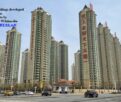 CommentariesTop Story
Hong Kong court liquidates failed Chinese property giant
CommentariesTop Story
Hong Kong court liquidates failed Chinese property giant
-
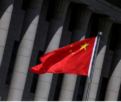 CommentariesTop Story
China’s stock market fall sounds alarm bells
CommentariesTop Story
China’s stock market fall sounds alarm bells
-
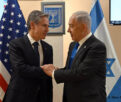 Commentaries
Middle East: Opportunity for the US
Commentaries
Middle East: Opportunity for the US
-
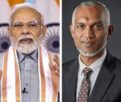 Commentaries
India – Maldives Relations Nosedive
Commentaries
India – Maldives Relations Nosedive
-
AdSense code

















